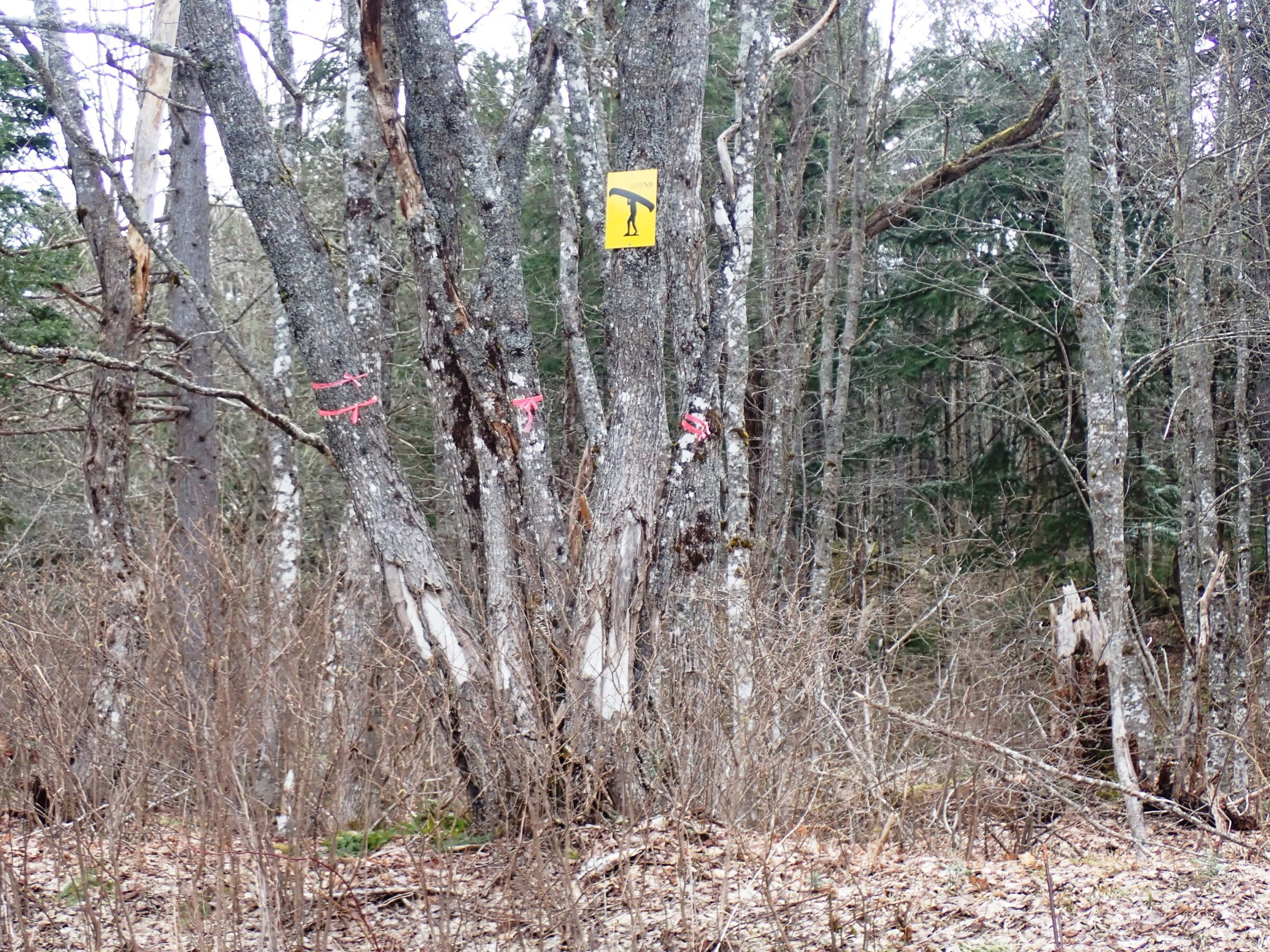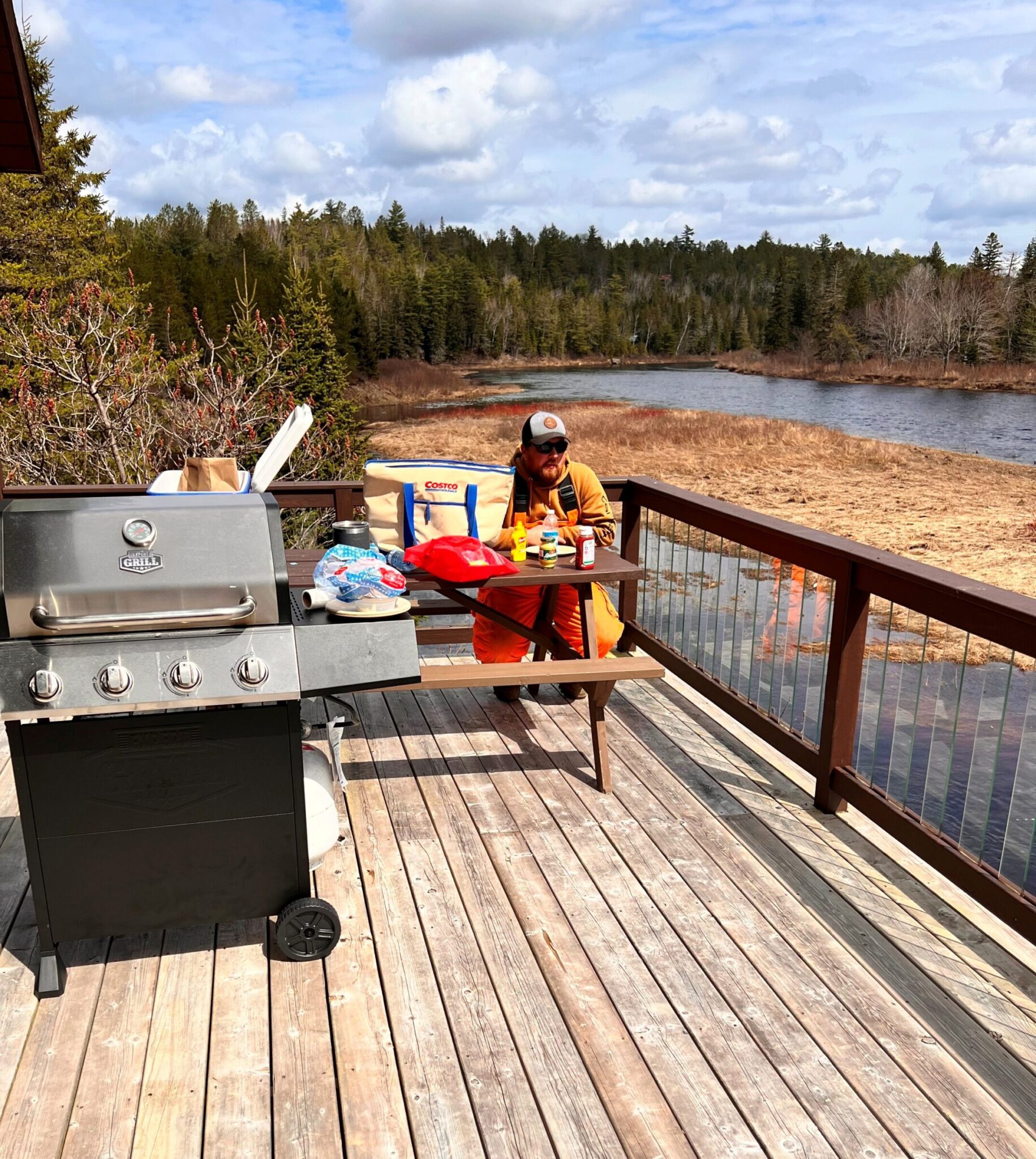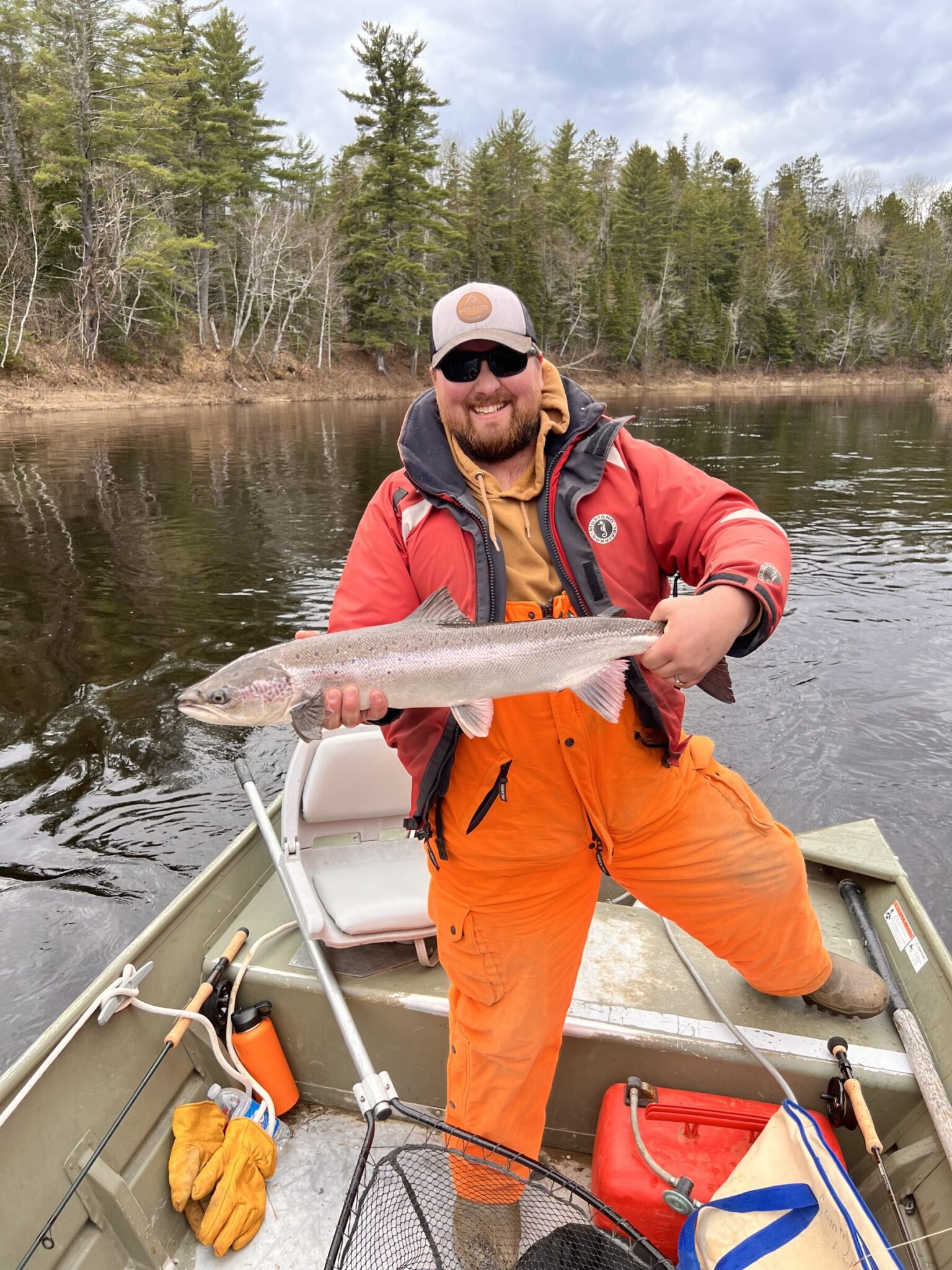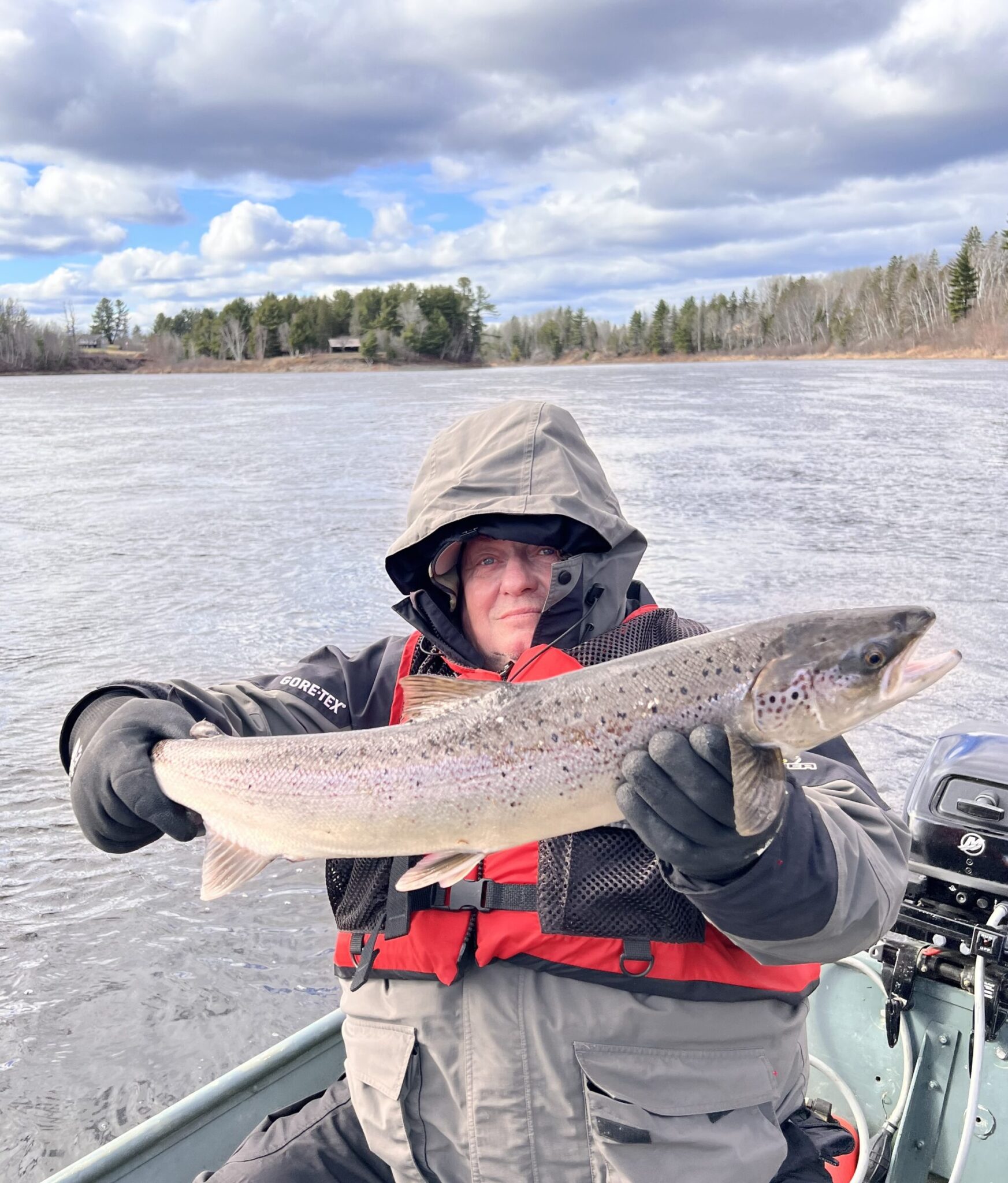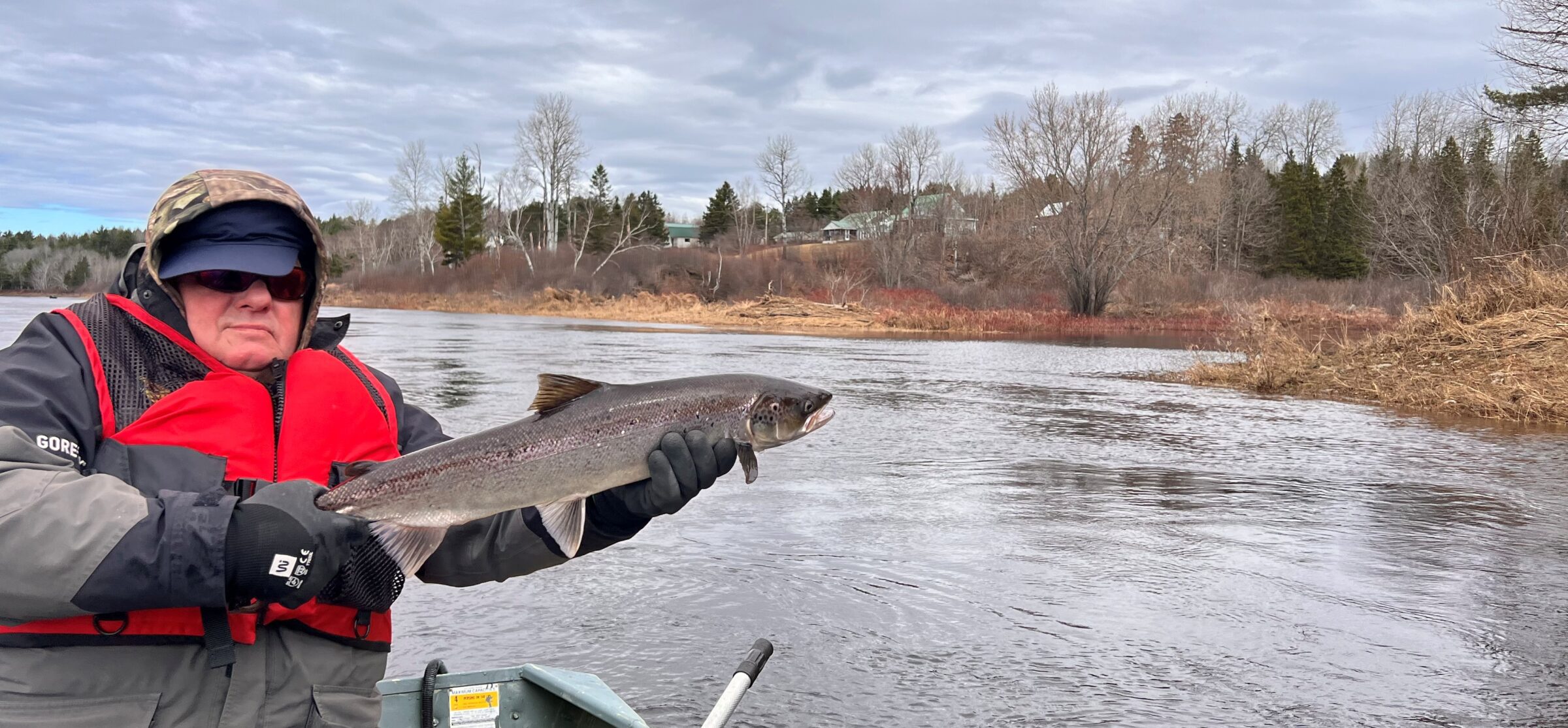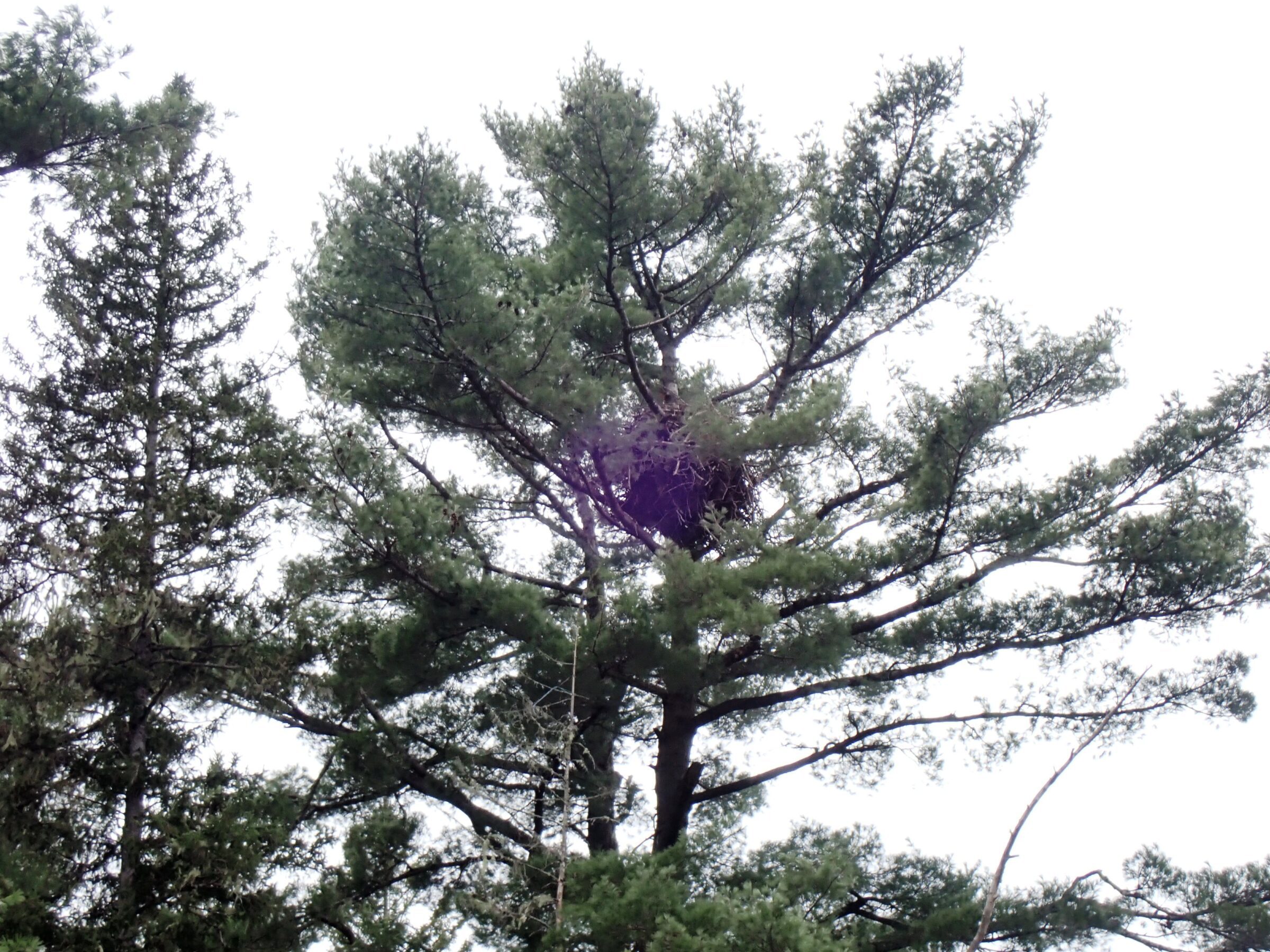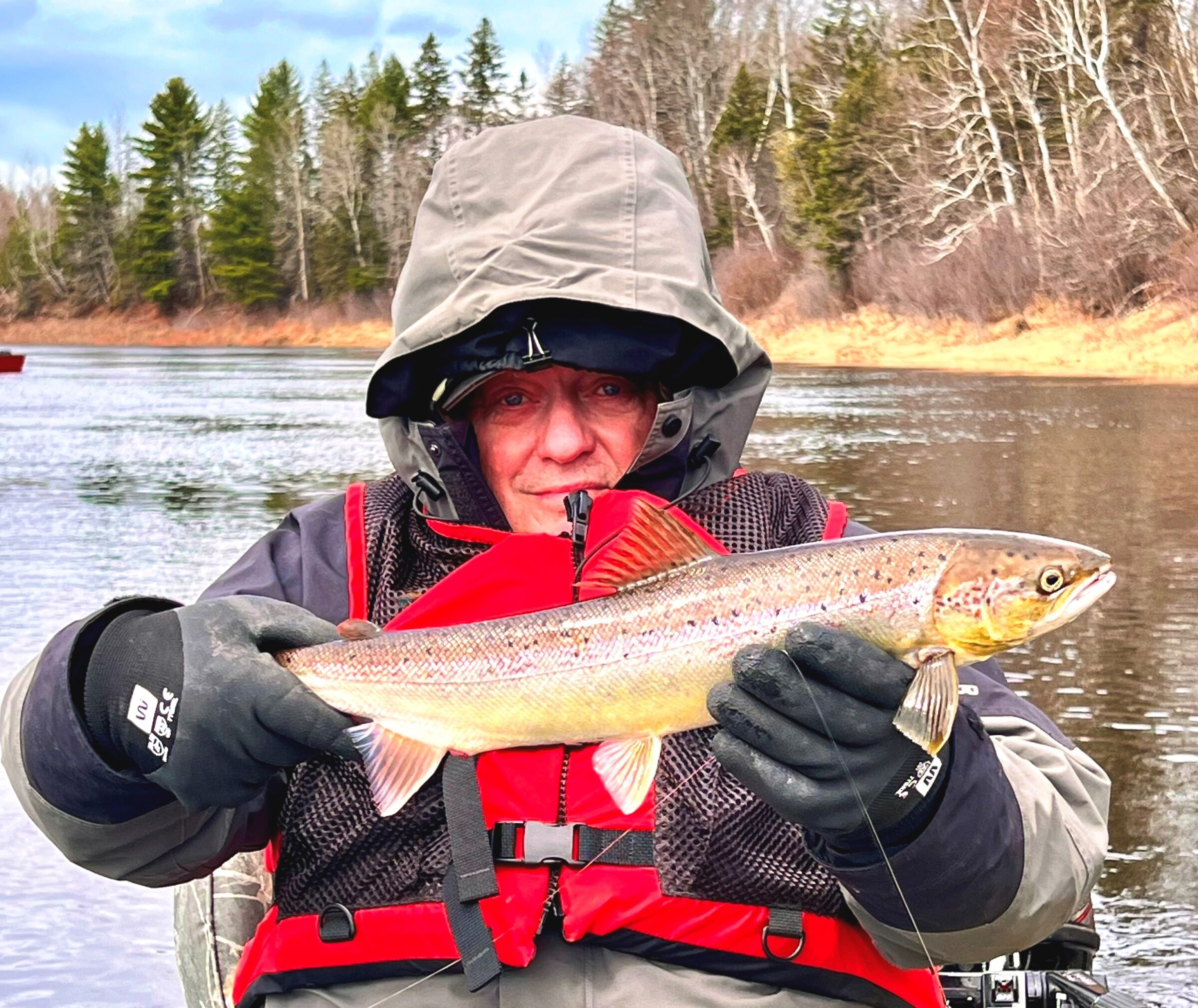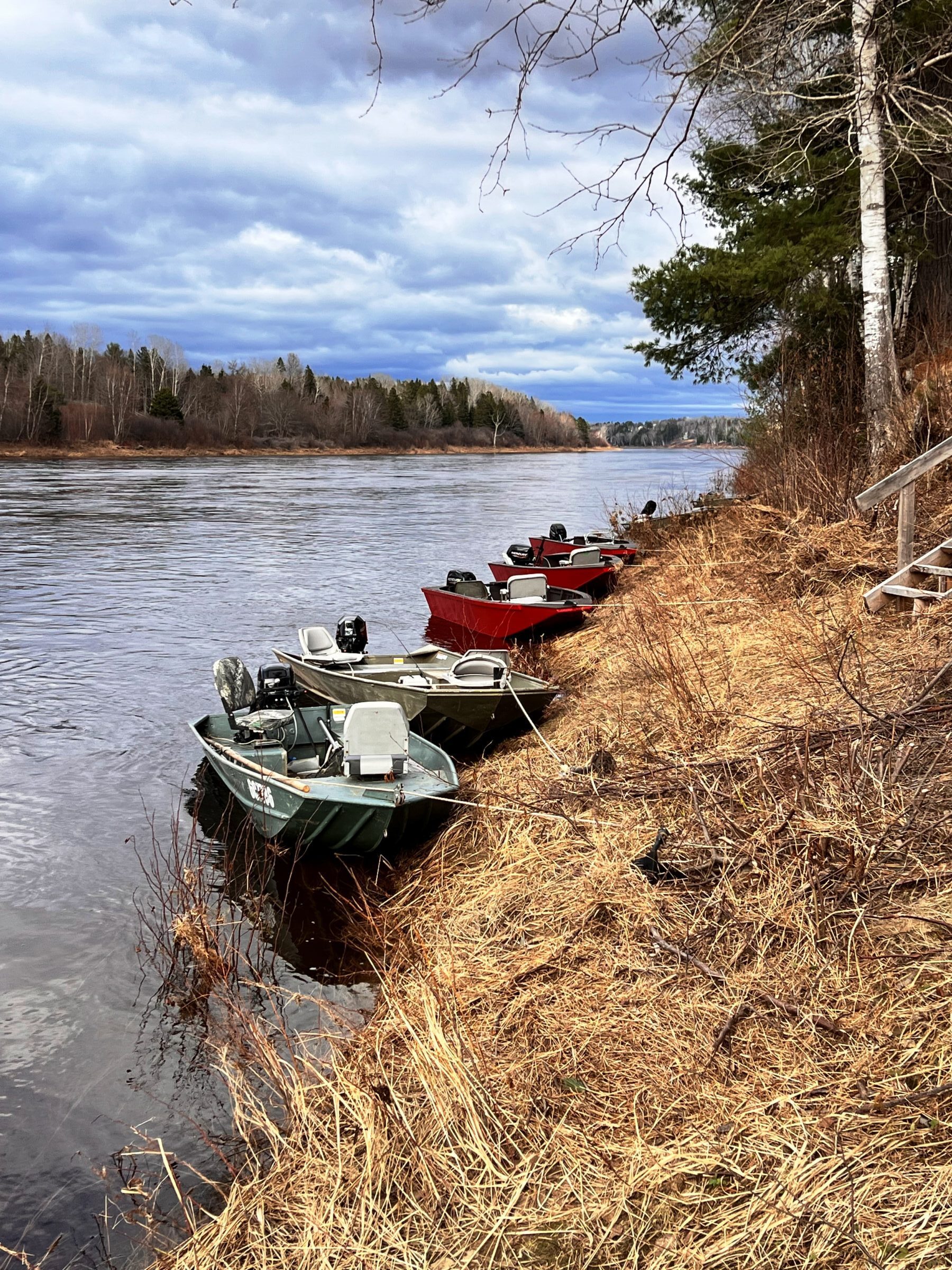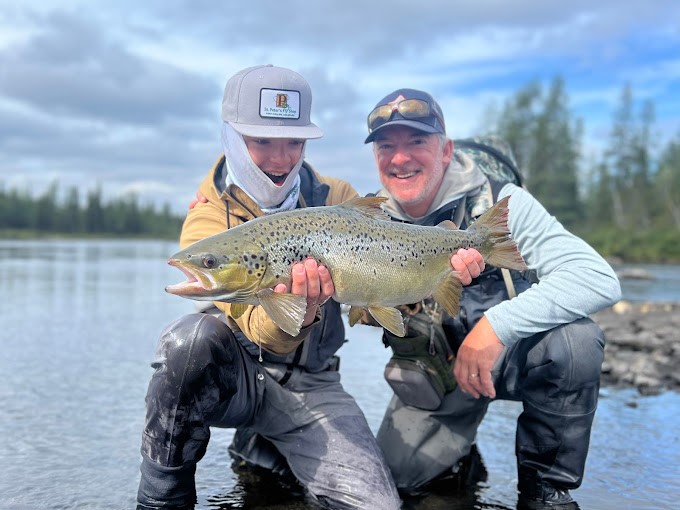
Miramichi Season Opener Report
Fishing Friends –
Beyond simply enjoying a few days in camp, my goal for the opening days of the Miramichi 2024 salmon season was to try and catch a salmon kelt in the upriver area of the Cains that Harry Allen fished in the early years of the 20th century. As Allen’s parties canoed down the Cains from Bantalor, their first day out was really just a wilderness canoe trip. According to the old books written about the trips, the first night out was typically spent a short distance upriver from Wildcat Brook. They cast a line for trout, but that was the extent of the fishing. Later on the second day they got into some pools below the Grand Lake Road bridge, and there they started fishing for salmon. Foremost among those was the Arbeau Pool, located about 4 miles below the Grand Lake Road and about 26 miles upriver of the Cains River’s junction with the SW Miramichi. Since I have read about that pool being the start of Allen’s salmon fishing on these trips, I think it is very likely that it also about as far upstream as kelts normally remained during the winter after spawning. Allen Outfitters would camp there overnight and fish the pool both in the evening of arrival and at least the next morning.
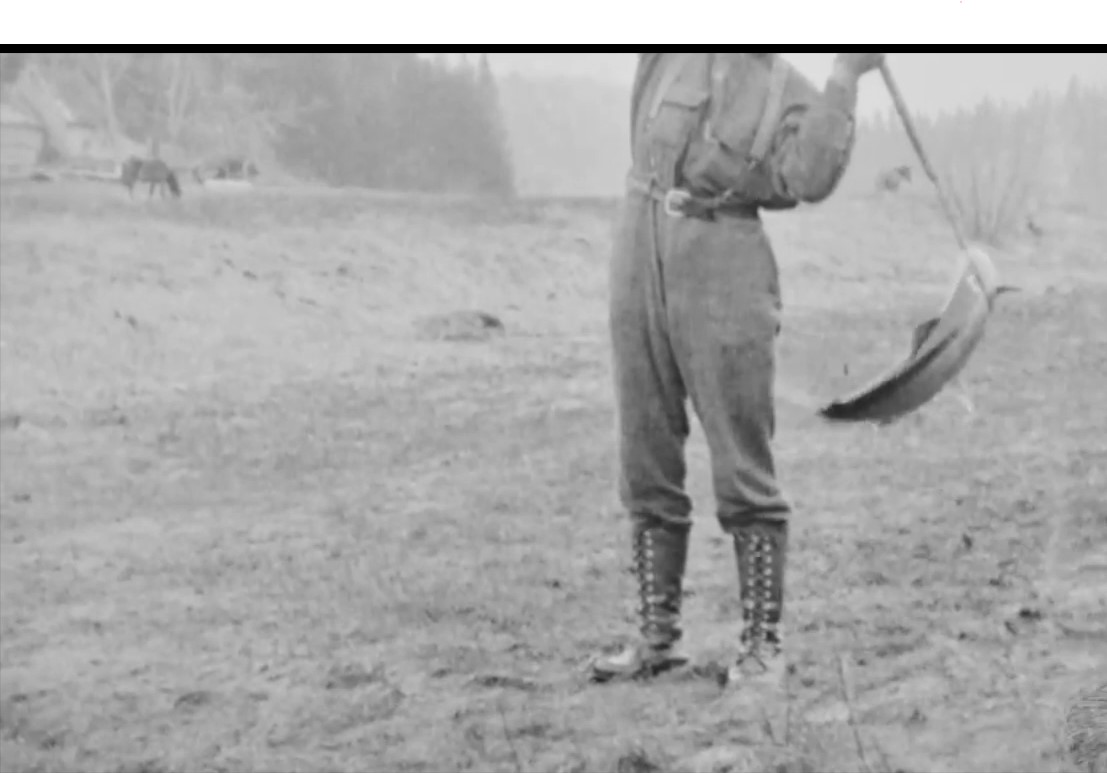
Arbeau Farm in upper left of photo – only photo I have ever seen of the farm is this one I extracted from a 1917 movie film.
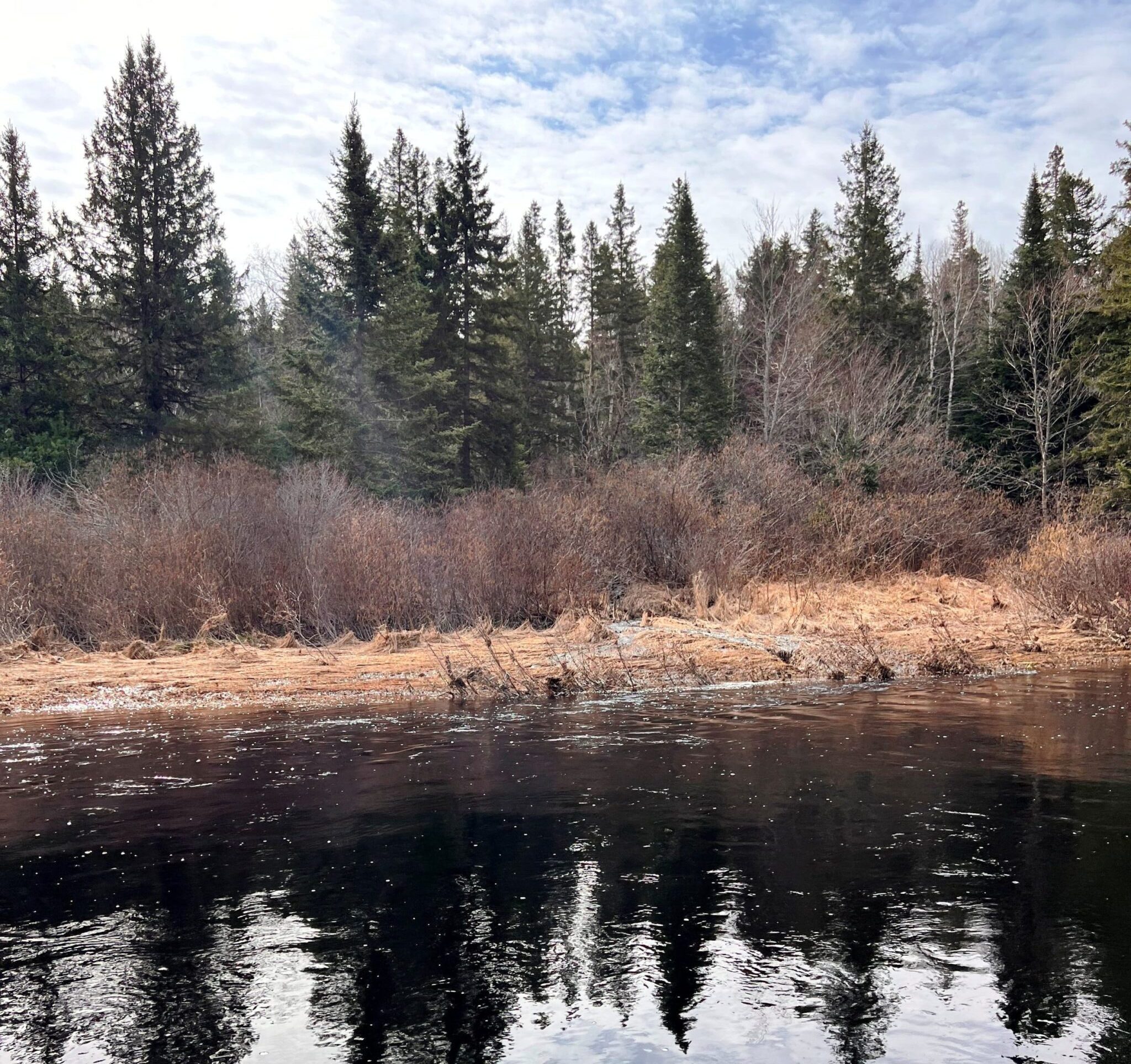
Overgrown river flat where Allen would have been standing. Remains of old building are on the edge of the woods in back of the alders.
An Alexander Arbeau had the farm there, but this was never a crown grant and the property was probably simply squatted on, not an uncommon activity in mid-1800s New Brunswick. I researched the deed when I was writing On the Cains, and I found that Harry Allen had purchased the homestead from Arbeau in 1932 – the year that Harry died – and sold it immediately to Leuan Harris of Geneva, New York. This assumedly pre-arranged maneuver was not uncommon years ago. It kept the price from being inflated and put a
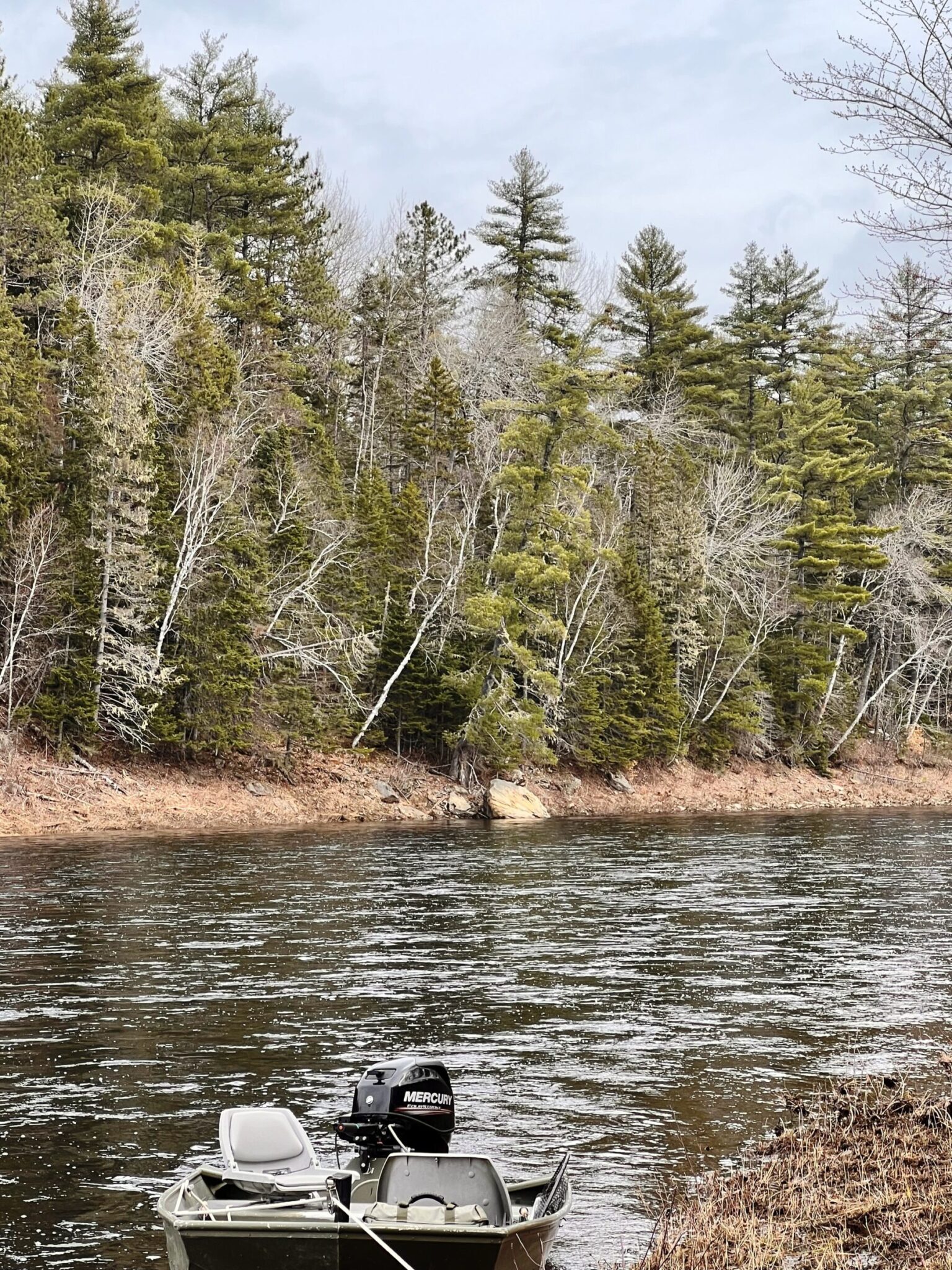
Jet jon boat. Old “eyed rock” on opposite shore told the natives when they had reached the portage path to the Gasperaux River and south. This is just below the Arbeau farm. Click om image for better look.
little money in the pocket of the outfitter. Other properties transferred in this same fashion. There is no record of it ever being sold again, yet it is owned today by a lumber company. Almost certainly Harris’s family abandoned the property when the reality of owning such remote and foreign real estate in 1932 finally set in. The property was probably taken for taxes – also common. Today it is public water like almost all of the upper Cains.
Tyler Coughlan, son of Byron “Byzie” at Country Haven took me up there in their jet outboard powered jon boat. We caught a large trout, but that was it. Our consensus was that the pool was quite shallow and fast moving. It may very well be that it has filled in some over time. It was great fun, though, and heading back downriver we stopped in to meet Darrell Warren and Nick Keenan at the Mahoney Brook camp for a hot dog lunch. Nick had been wandering around and found what he was confident was an old cellar hole and road on the property. The river in the photograph shows the bottom end of the Mahoney Brook pool, and that is the furthest upriver that I have personally caught a kelt. Jason Curtis and I got two grilse there one day a few years back.
On the way back down the Cains we stopped in at a couple of the lower river pools. The first one gave us nothing, but the second was holding a good number of salmon and grilse. We put two nice salmon in the net. Another salmon ran off into the backing and cartwheeled across the surface of the water. It would have been hard to ask more from a bright fish. There were several more pools in front of us since we were still several miles above the mouth, but it was already 5:00 PM so we hustled along. I’ve had a lot of great opening days on the Miramichi/Cains, and this was another one.
The two days that followed were a blurr. Darrell Warren and I fished most of the time in the vicinity of Doctor’s Island. The shallows around the island make a sort of broad dam in the SW Miramichi, and this causes the river immediately above the island to be relatively slow moving. It also features a depth that the kelts like, so it is a very well-known and hard fished area. It is fairly expansive, though, and accommodates a lot of anglers.
We also fished near my camp at Campbell’s. The mouth of some of the brooks near the camp are productive areas, and one morning we very quickly got three and lost a couple at one of them. I’ve fished this brook every spring for more than 20 years, and this was comparable to any of the better years.
Overall, 2024 spring fishing was really quite good, and frankly much better than I had anticipated after last year’s poor fall run. We could only surmise that a lot more fish made it to the upriver spawning areas on the summer-long high water than the Millerton trap numbers showed.
There were fish of all sizes in the mix. Grilse numbers for us were relatively low at about 25% of the catch – which mirrors what we experienced in last year’s bright run. Dave Fenderson, though, who hosted a group of Anglers Club of New York members at Country Haven was himself fishing near his camp at Salar Haven in Upper Blackville. He reported that they had great fishing with the majority being grilse.
The reports coming in from all up and down the river also talked about very good numbers of fish. Some thought it wasn’t quite as good as last year, some thought it was better, but everyone was happy with it.
The water was generally quite high, especially the first day, and I fished the whole trip with a 450 grain head on a 10-weight. I just used 6 feet of 20-pound-test mono for a leader. My most productive flies were both large streamers. One was a white and red marabou with an orange, palmer-wound collar and lots of flash. The other was a Willie Gunn Waddington about 4 inches long. I like the more mobile marabou in the slower water and the hair-wing Willie Gunn in the faster water, but honestly I’m sure that just about anything you got into the zone would catch fish.
It is great to see these spring fish for a number of reasons beyond just something to fish for. These fish are now all feeding and resuming the process of rebuilding. Some of them will go back to sea for one or even two winters and come back as very impressive specimens. As past MSA president Mark Hambrook used to say, every salmon over 15 pounds that you catch in the Miramichi has spawned before. Many of these salmon, though, will just go out into the Gulf of Saint Lawrence and feed for some portion of the summer. Beginning in late July these fish start returning to the river as repeat spawners. They add tremendously to the stability of the Miramichi’s spawning population. Now, with DFO’s miserably mismanaged striper population decimating the outgoing smolts, the ones that do survive to become repeat spawners are more important than ever.
Since I got back to Maine I have heard from a number of folks on the river including Eddie Colford and Rip Cunningham of the Black Brook Salmon Club. They are experiencing excellent spring fishing too, and Eddie mentioned good numbers of trout.
On Wednesday morning, while still in camp, I participated in an MSA Conservation Committee meeting. Of particular interest was that the MSA has gotten a permit this year to gather wild smolts from the SW Miramichi. This is a long story, but the bottom line is that at least the DFO officials in charge are starting to realize the severity of the decline in salmon numbers, and are beginning to give us the tools to help the salmon. We do need to greatly reduce the striper numbers. There will be some progress towards that this year, but not nearly enough. It is a start. Beyond that, though, as salmon rivers on both sides of the ocean are finding out, a strong hatchery supplementation program is necessary to maintain a good fishery unless you happen to be located near or above the Arctic circle. Without any doubt, it is important to realize that it is the Miramichi Salmon Association “MSA” that is leading that fight. There are literally dozens of long-time MSA members who are actively involved in lobbying both the Province and the Federal DFO officials on behalf of the Miramichi. I am thoroughly convinced that without the MSA we would be absolutely lost.
Over the years I’ve tried to do a service to both our readers and some friends by letting them know about fishing opportunities. I have no stake in this advertisement other than hoping to garner a little goodwill. Tom Ackerman, who I have known for a many years, is hosting a fishing trip to the McKenzie River in Labrador. Fishing here offers a crack at not only humongous Labrador brookies but features a much rarer landlocked Atlantic salmon fishery. Labrador is the home of the current world record landlock.
The trip is from June 21-28. According to Tom some of the landlocks are double digit in size. One of the most appealing features is that the package includes a flight from Quebec City into the lodge that bypasses the need to overnight in Goose Bay.
There are two rods available. If you have any interest in this trip you should contact Tom directly at tom@classic-connections.com.
I’ll be posting some updates on the rest of the Miramichi spring fishery for the next few weeks along with water conditions etc. If you aren’t following my Salmon Reports please check it out. Here is a link. Put it in your favorites and check on it whenever you get the itch to hear about the Miramichi.
Thanks for reading. Brad Burns
PS If a friend told you about this blog, you can click back to the home page of this website, scroll down a tiny bit, and you will see a Subscribe Here button. This will put you on an e-mail list so that I can let you know the next time I write a Miramichi Salmon blog. Don’t worry, no spam, and I don’t sell this list.




